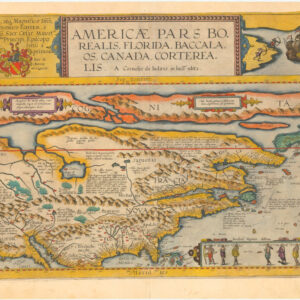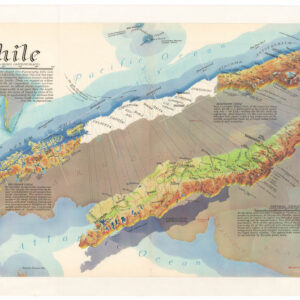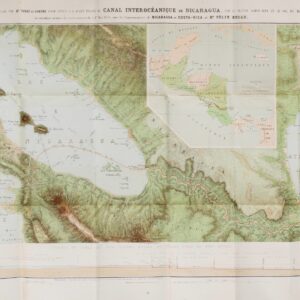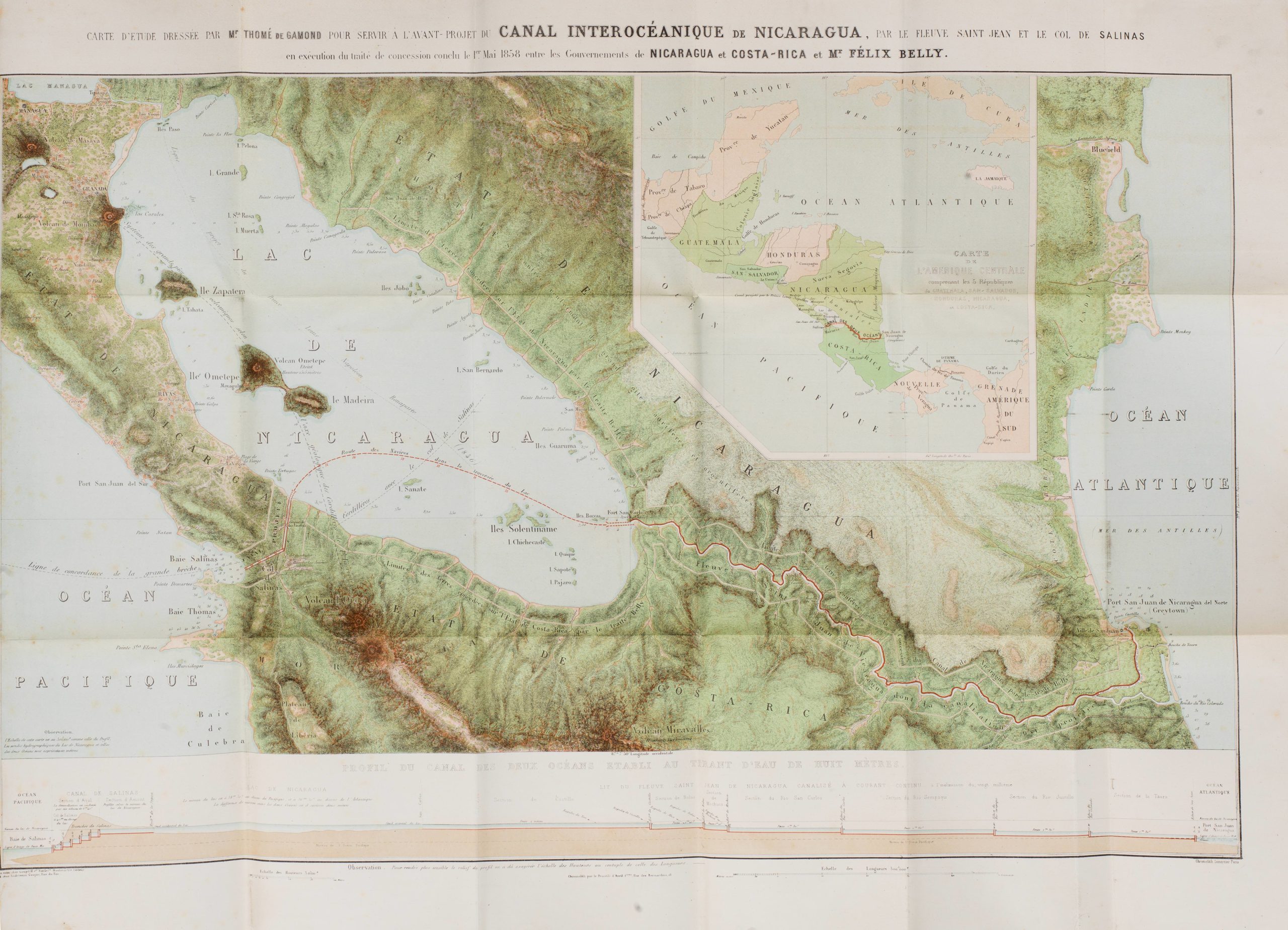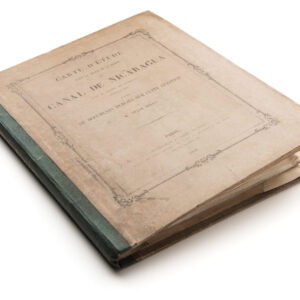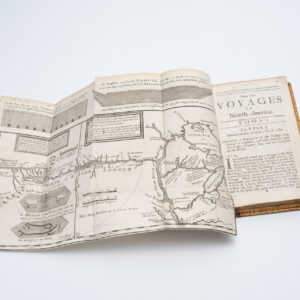The communications lifeline of the British Caribbean: an unrecorded map of the Royal Mail Steam Packet Company’s Ships to the West Indies.
West Indies. New Chart shewing the Routes of the Royal Mail Steam Packet Company’s Ships.
$1,800
1 in stock
Description
A seemingly unrecorded, charmingly ephemeral map of the routes of Royal Mail Steam Packet Company’s Ships to the West Indies, a system that the was the communications lifeline of the British Caribbean; published in 1850 by the boutique lithographer George Edward Madeley; with the contemporary provenance of John Berney Petre, a prominent yachtsman with close connections to Jamaica’s plantocracy.
For almost a century the Royal Mail Steam Packet Company (founded in 1839) dominated the transport of the post between Britain and the West Indies, as well as the broader Caribbean. The present seemingly unrecorded map depicts the entire West Indies and Gulf of Mexico and was printed in 1850 during the formative, high growth period of the Company’s operations. The legend in the lower right corner explains the Company’s shipping routes. The strong black lines delineate the routes of steamers leaving the Company’s base of Southampton on the 2nd of (bold lines) and the 17th of each month (intermittent lines). The red lines show the return routes of the steamers from the West Indies to Southampton on the 2nd of (bold lines) and the 17th of each month (intermittent lines). The thin black lines depict the routes of the intercolonial steamers running from Jamaica to Bermuda. Finally, the blue lines show the routes of schooners, both leaving Southampton (bold lines) and return of the West Indies (intermittent lines). The inset map in the upper left shows the routes from Southampton into the Mid-Atlantic, towards at the way stations of Madeira and the Azores.
Impressively, during the time in which the present map was made, the Company’s steamers almost always left on time and could guarantee delivery from England to destinations in the West Indies in around three weeks. The Royal Mail Steam Packets service was for decades the lifeline of the economic, social, political, military communications of the British West Indies.
We cannot trace even a reference to the present map, let alone the location of another example. It may have been produced to be instated in an evidently extremely rare pamphlet, or as a separate work (this issue was contemporarily mounted upon linen and inscribed on the verso).
While the work does not feature a printed date, the time of its production can be fixed with confidence, as it notes the Royal Mail Steam Packet Company’s routes from the West Indies to Brazil, which commenced in 1850, while the owner’s inscription on the verso features the year “1850”. Elsewhere, the map features the Company’s routes as they were reformed in 1846.
The map has an intriguing and appropriate provenance, for it features the name of “P. Berney Petre” on the verso. This refers to John Berney Petre (1805 – 1882) of Westwick Hall near North Walsham, Norfolk. After serving in the army for some years, Petre joined the Royal Yacht Squadron, becoming one of the England’s most prominent competitive sailors. He often raced in the Solent (near Southampton), mostly notably as the skipper of the Osprey, his 59-ton cutter. He would have had a strong interest in the West Indies, as his sister Mary (to whom he was very close) married into the Dawkins family, one of the leading clans of the Jamaican plantocracy.
The Royal Mail Steam Packet Company: The Lifeline of the West Indies
From the mid-17th Century onwards, Britain’s West Indian possessions became vitally important, and as their sugar economies boomed, making them the most commercially profitable parts of the of empire. Given that the islands lay at least 6,000 km-plus from England, ensuring reliable communication by post between the mother country and Jamaica, Barbados, Antigua, etc. was critical. During the 17th Century, informal arrangements were made with individual ships’ captains to carry post to and from the West Indies. While this system was viable, it was not as reliable, and usually not as speedy, as a professional, dedicated Trans-Atlantic mail system.
In 1702, Edmund Drummer, the Surveyor-General of the Royal Navy, founded the first West Indies packet boat system between England and the West Indies, with Falmouth as its English terminus, and with regular stops in Jamaica, Barbados, Antigua, Montserrat and Nevis. While the service was universally praised for its stellar quality, it was not financially profitable (in part due to the ongoing wars with France and Spain), and was forced to cease operation in 1711.
The British Post Office set up a packet boat service from Falmouth to the West Indies in 1745, which was expanded to include the North American colonies in 1764. While the service was of a high quality during peacetime, the frequent wars (once again, involving France and Spain) ensured that service was often interrupted, while finically it suffered long periods of unprofitability.
The packet service between Britain and the West Indies assumed heightened importance from around 1775, when increasingly the islands’ major plantations came to be owned by absentee landlords, some of whom had inherited their estates, having never stepped foot in Caribbean. As such, the plantations were run by managers and attorneys, whose only communication with their masters was facilitated by the packet mail.
During the Napoleonic Wars, many packet boats were intercepted by French naval vessels and privateers (totalling 46 vessels), such that in 1812 the system was placed in the charge of the Admiralty. For a time, armed naval vessels would carry the post. In 1838, the Atlantic was first successfully crossed by steamboats. It became clear that this technology would soon make the sailboat packets obsolete; however, neither the Admiralty, nor the Post Office was able or willing to finance the massive up-front costs of creating a West Indies packet steam fleet.
Enter James MacQueen (1778 – 1770), a brilliant, yet controversial, Scottish entrepreneur, geographer and political operative. In 1839, he founded the Royal Mail Steam Packet Company, with an ambition to dominate mail delivery throughout the British Empire, a goal captured by the corporation’s motto: Per Mare Ubique (everywhere by sea). While this dream was never fully realized, what was achieved was nevertheless impressive. In the autumn of 1839, the Royal Mail Steam Packet Company was granted a royal charter. In 1840, the Admiralty gave the Company a contract to operate two packets a month from an English Channel port carrying the mail across the Atlantic to the West Indies. Macqueen, who became the managing director of the enterprise, designed a system whereby fast steamers would make the run across the ocean (via other the Azores or Madeira), to arrive at a West Indies hub port, often St. Thomas or the Barbados, whereupon several regional packets boats would collect the mail and quickly run it to destinations all across the Caribbean, so saving much time. Macqueen arranged for the purchase of fourteen steamboats and a small number of schooners (for bulk post), a private mail fleet of unprecedented size and expense. While the Company initially used Falmouth as its base, from 1843 Southampton (located much closer to London) served as its British hub.
The Company’s operations were massively successful, providing ultra-reliable and speedy service, while earning strong profits. To give an example of the improvements in speed, the Company was able to deliver a letter from England to Jamaica in 20 days, while the former sail packet service accomplished the same in 42 days. Eventually the Company added extra ports of call, connecting the British West Indies to the Spanish Main, Brazil and North America. While Macqueen’s efforts to tap into the Trans-Pacific mail routes by way of Panama never quite panned out, the Company utterly dominated the Caribbean market.
Over the coming decades the Royal Mail Steam Packet Company continued to expand in the Americas, using state of the art craft and distribution methods. In 1927, it acquired the White Star Line (famous for the Titanic), briefly making it the world’s largest shipping company. However, in 1932, the Great Depression combined with a series of injudicious strategic decisions, caused the collapse of the Company, and its liquidation and reconsolidating into the Royal Mail Lines Ltd. So ended a glorious era in maritime and postal history.
Cartographer(s):
George Edward Madeley (1798 – 1858) was an ephemeral print and view maker based in London. He also produced several maps, including transportation maps lithographed maps of Indonesia. While Madeley was busy and financially successful, he tended to focus upon niche commissions, such that his print runs tended to be very limited; almost all his works are very rare today.
Condition Description
Lithograph with shipping routes heightened in original color, contemporarily mounted upon linen, verso featuring manuscript owner’s inscription of “J. Berney Petre 1850” and paper pastedown label bearing the short title “West Indies and the Routes of the Mail” (Good, some toning, wear and tiny holes along old folds with very minor chipping and loss).
References
N / A – Map seemingly unrecorded.
Cf. [West Indies Packet History:] B.W. HIGMAN, Plantation Jamaica 1750 – 1850: Capital and -Control in a Colonial Economy (Kingston, 2005), pp. 121-133; [Madeley Biography:] Laurence WORMS and Ashley BAYNTON-WILLIAMS, British Map Engravers (London, 2011), pp. 428-9.
